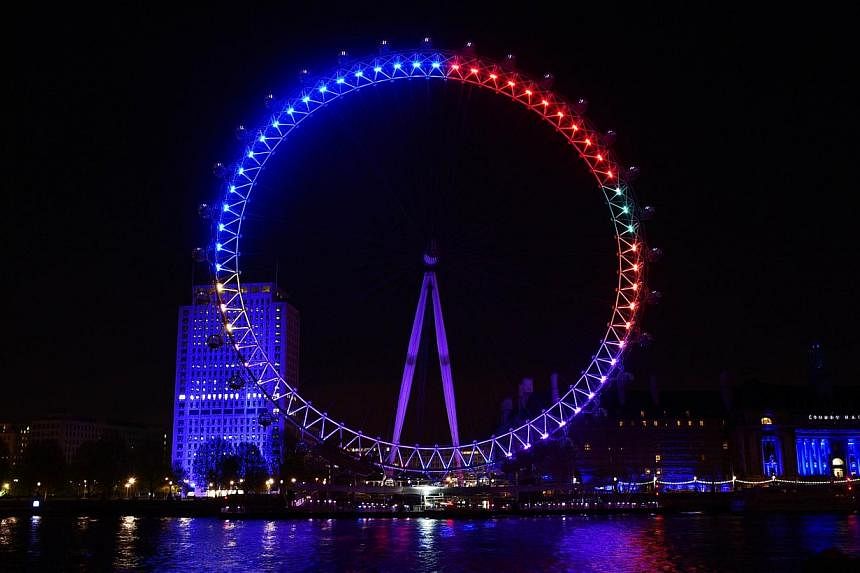London - The London Eye tourist attraction was lit up yesterday in party political colours reflecting the amount of social media interactions about them on Facebook.
The giant observation wheel overlooking the Houses of Parliament on the other side of the River Thames is being lit up this way every night in the run-up to Thursday's general election.
The more a political party crops up in people's interaction on Facebook, the bigger a portion of the ring gets lit up in that party's colours.
An interaction is calculated as either a like, share or comment, such as a post or replied post on the social networking site.
Between Jan 1 and May 1, the anti-immigration United Kingdom Independence Party (purple) was the most-discussed party, with 15.6 million interactions and three million people talking about UKIP.
Prime Minister David Cameron's centre-right Conservatives (blue) were the second most talked-about party with 12.2 million interactions from 2.5 million people.
Then came the centre-left main opposition Labour Party (red) on 9.7 million interactions.
They were followed by the centrist Liberal Democrats (orange-yellow) - the junior partners in the governing coalition - and the left-wing secessionist Scottish National Party (yellow), both on two million.
The left-wing Green Party (green) were on 1.3 million.
The social media data can be compared with the latest BBC poll of polls, which shows the main two parties neck-and-neck, with neither thought likely to win a majority.
The Conservatives were on 34 per cent; Labour 33 per cent; UKIP 13 per cent; the Liberal Democrats 8 per cent; the Greens 5 per cent; and others combined 6 per cent.
AFP

